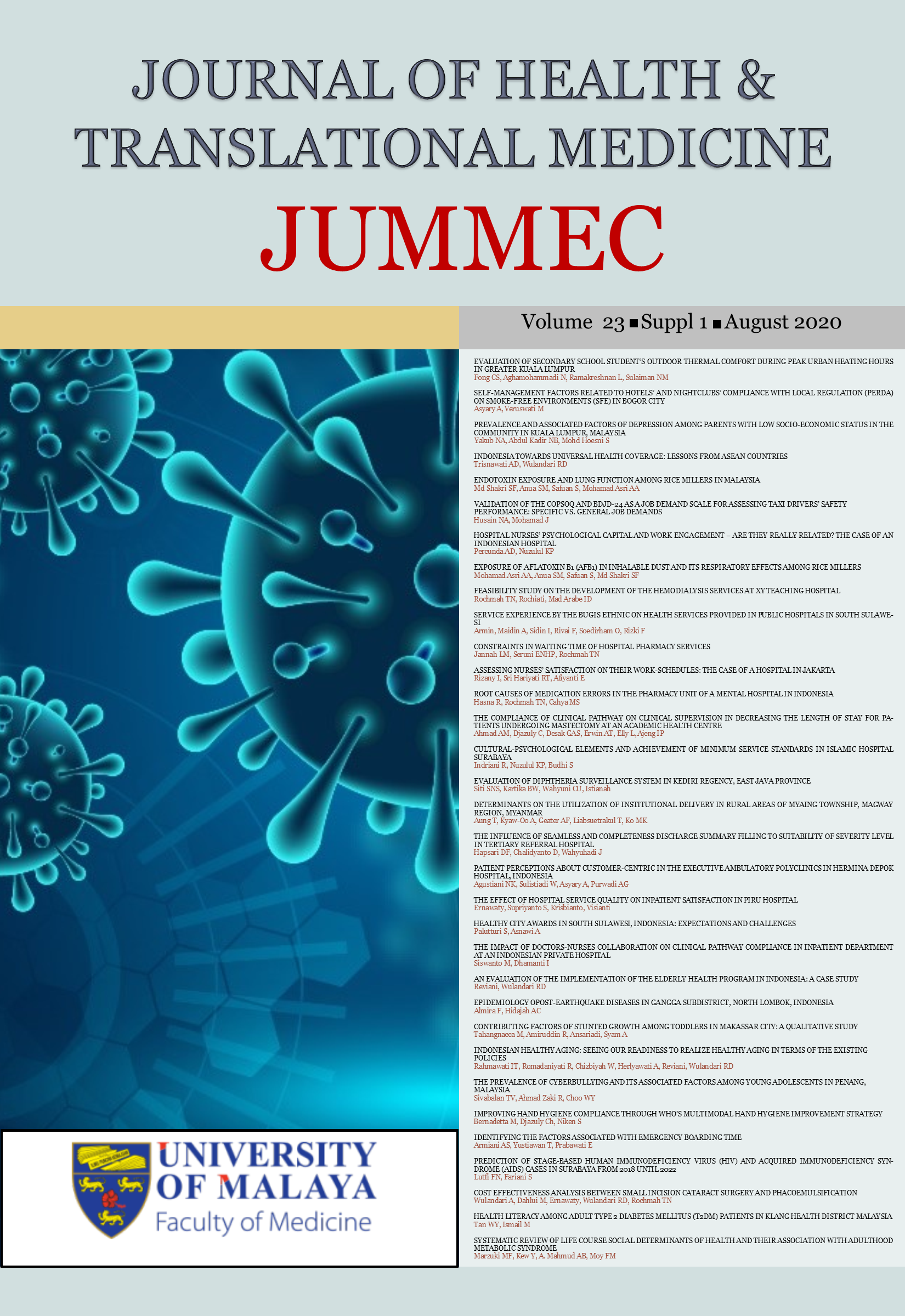EVALUATION OF DIPHTHERIA SURVEILLANCE SYSTEM IN KEDIRI REGENCY, EAST JAVA PROVINCE
Keywords:
Diphtheria, Surveillance, Evaluation, Indicators, Kediri RegencyAbstract
Introduction: There were 954 cases of diphtheria in 170 regencies or cities in 30 provinces in Indonesia with a CFR of 4.6% in 2017 and 48% of cases of diphtheria came from East Java. Kediri is one of the regencies that had been affected by the outbreak in January 2018 and found 19% of toxigenic positive cases from 21 cases of diphtheria until May 2018. The diphtheria outbreak which occurred in the Kediri Regency had prompted the needs for the evaluation of the diphtheria surveillance system.
Objective: The present study aimed at the evaluation of the simplicity attribute and indicators for the diphtheria surveillance performance in the Kediri Regency, East Java Province, in Indonesia.
Methods: The present study was conducted from April 2018 to May 2018. The researchers carried out interviews with the stakeholders from the surveillance and immunization section of the Health Office in the Kediri Regency and conducted a retrospective record review of the diphtheria report, investigation form, and the laboratory report from January 2018 to May 2018. Also, the researchers adapted the 2001 CDC guidelines on surveillance to assess the simplicity and Indicators for the diphtheria surveillance performance from the guidelines for prevention and control of diphtheria from the Indonesian Ministry of Health, 2017. The results from the indicators were compared to WHO’s (2017) that recommended performance indicators to accurately meet the objectives of the surveillance.
Results: According to the stakeholders, the diphtheria surveillance system was simple in case finding, recording-reporting, and feedback, but it was not simple in the logistics support (Diphtheria Anti Toxin), specimen collection and data analysis. The indicators of the evaluated-surveillance performance comprised eight indicators, in which seven indicators had met the WHO target (>80%), including completeness of reporting (100%), timeliness of reporting (100%), adequacy of investigation (100%), timeliness of investigation (100%), specimen collection (100%), timeliness of specimen transport (90%) and timeliness of reporting laboratory results (100%). The indicators of the timeliness of specimen collection had not reached the target (42.85%).
Conclusion: This evaluation showed that the diphtheria surveillance system was simple, but not simple in the logistics support (Diphtheria Anti-Toxin), specimen collection and data analysis. Of the eight surveillance performance indicators, seven of them met the target (>80%).
Downloads
Downloads
Published
Issue
Section
License
All authors agree that the article, if editorially accepted for publication, shall be licensed under the Creative Commons Attribution License 4.0 to allow others to freely access, copy and use research provided the author is correctly attributed, unless otherwise stated. All articles are available online without charge or other barriers to access. However, anyone wishing to reproduce large quantities of an article (250+) should inform the publisher. Any opinion expressed in the articles are those of the authors and do not reflect that of the University of Malaya, 50603 Kuala Lumpur, Malaysia.


